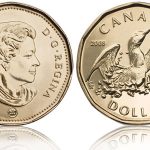Gold for delivery in December rose on Monday, extending the biggest weekly advance since mid-June, amid speculations Chinas currency devaluation last week may prompt the Federal Reserve not to raise interest rates in September, while the Asian country said it increased its gold reserves in July following a disappointing stockpiles report last month.
The December contract traded 0.49% higher at $1 118.1 per troy ounce at 07:02 GMT, shifting in a daily range of $1 119.3 – $1 112.9. The precious metal fell 0.3% on Friday to $1 112.7, closing the week 1.7% higher.
Bullion surged past the $1 100 mark last week after Beijing devalued the yuan in a bid to boost struggling exports, sparking fears of a currency war and prompting many investors to seek safe haven. The move also spurred speculations that the Federal Reserve could postpone its first interest rate hike in nearly a decade for later this year after robust employment data, retail sales and construction activity all backed the case for an increase in borrowing costs as early as September.
China also revealed on Friday that it increased its gold reserves in July by 1.1%, a month after it said it had boosted holdings by 57% over the last six years, which was below expectations.
However, golds rally stalled after the Chinese central bank intervened verbally late last week to calm the markets, saying that there was no basis for a continued decline in the yuan given the Asian country’s strong economic fundamentals. Money managers remained net-short on gold for a fourth straight week after in July they turned bearish for the first time since the government started tracking data in 2006. Speculators held a net-short position of 2 794 futures and options contracts as of August 11th, according to data by the US Commodity Futures Trading Commission.
Analysts expect gold to resume this years decline as fears of a currency war subside, with investors now focused on Wednesdays minutes from the Federal Reserves July 28-29th policy meeting for clues on whether the central bank will take action in September or delay the hike. The minutes will likely shift focus back on the recently released strong US economic data that has kept the dollar broadly supported.
Assets in the SPDR Gold Trust, the biggest bullion-backed ETF, were unchanged for a second day on Friday at 671.87 tons after they rebounded Wednesday from the lowest since September 2008. Holdings in the fund have shrunk by little over 50% since peaking at at 1353.35 tons in December 2012.
A report by the World Gold Council showed last week that global gold demand tumbled to the lowest in six years in the second quarter after top two consumers China and India purchased less gold jewelry as incomes at both countries were separately hit.
Overall demand was 12% lower compared to the same quarter a year earlier, amounting to 914.9 metric tons. Chinese purchases contracted 3% as cooling economic growth and heavy fluctuations in the domestic stock market curbed appetite, while India saw purchases drop by a quarter as unfavorable weather conditions hit rural incomes.
Pivot points
According to Binary Tribune’s daily analysis, December gold’s central pivot point on the Comex stands at $1 114.7. If the contract breaks its first resistance level at $1 118.4, next barrier will be at $1 124.0. In case the second key resistance is broken, the precious metal may attempt to advance to $1 127.7.
If the contract manages to breach the S1 level at $1 109.1, it will next see support at $1 105.4. With this second key support broken, movement to the downside may extend to $1 099.8.
In weekly terms, the central pivot point is at $1 109.3. The three key resistance levels are as follows: R1 – $1 129.7, R2 – $1 146.6, R3 – $1 167.0. The three key support levels are: S1 – $1 092.4, S2 – $1 072.0, S3 – $1 055.1.





